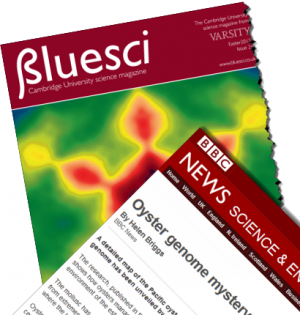Reading an article: Difference between revisions
No edit summary |
No edit summary |
||
| (13 intermediate revisions by 4 users not shown) | |||
| Line 1: | Line 1: | ||
{{ | {{Rinfo | ||
|type= Lesson idea | |||
{{ | |attribution={{James de Winter}} {{Simon Knight}} | ||
|subject= secondary, science | |subject= Science, literacy, secondary, science | ||
|topic= Reading | |topic= Reading skills | ||
|tagline=Encouraging students to read about science beyond the textbook | |||
|resourcenumber= SC0010 | |resourcenumber= SC0010 | ||
|age= | |final=yes | ||
|title= Reading | |age= KS4, KS3, Secondary | ||
|content= | |title= Reading and discussing popular science articles | ||
|image=Readingscience.png | |||
|tagline=Read. Get the world's view and see how science works for real | |||
|content= Reading scientific articles moves students beyond textbook learning and, of course, helps expand their knowledge. More than this, encouraging reading offers opportunities to compare messages in popular science writing with the writing for academics. For example, students could compare articles written on the MMR vaccine by 'behind the headlines' bloggers with some mainstream pieces. They could discuss scientific communication, its popularity, the need to explain terms, the use of images and terminology and, sometimes, the complete avoidance of terminology. As teacher, you could instigate discussion on peer review, the process of publishing and the structure of academic articles. You could also encourage students to write a blog, or a 'wiki' on science and to think about science communication in various contexts. | |||
The place to start could be an article in the news, a box of articles or a set of bookmarks you've collected. Included here are links to some less obvious sources for science articles. | |||
|format= | |format= | ||
|strategy= | |strategy= | ||
|Learning Objectives= Depending on the | |Learning Objectives= Depending on the activity chosen, learning outcomes may be: | ||
* discussing various media for science communication and distinguish between academic and non-academic articles, | |||
* identifying ways that academic work could have an accessible format and style, | |||
* identifying the differences in aims for scientific writing as well as the consequences. | |||
* knowing about peer review versus writing for magazines and the web. | |||
|additional resources= | |additional resources= | ||
|useful information= | |useful information= | ||
|related resources= | |related resources=See Listening to scientists - a collection of interviews on ORBIT [[Listening series - C105]] | ||
|other= | |other= | ||
|resources= | |resources= | ||
}} | Some sources of articles, that may suit ages 14-19 | ||
* Choose an article for discussion in class from BlueSci (http://www.bluesci.org), a science magazine produced by students at the University of Cambridge (Creative Commons license) | |||
* Collect articles and tag them into categories for pupils to read regularly. For example, check this student teacher's collection of [http://delicious.com/sjgknight/psychology psychology links on Delicious] | |||
* Look at the balance of media coverage of health stories. Contrast them with the original news articles. See [http://www.nhs.uk/news/Pages/Howtoreadarticlesabouthealthandhealthcare.aspx NHS Choices 'Behind the Headlines'] | |||
* For advanced readers, see this blog directory based on research articles [http://researchblogging.org/ Research Blogging] | |||
* Or see these open access journals from various scientific fields [http://www.plosone.org/home.action PLoS ONE publishers] }} | |||
[[Category:Secondary]] | [[Category:Secondary]] | ||
[[Category:Science]] | [[Category:Science]] | ||
Latest revision as of 17:48, 6 February 2015
Lesson idea. Reading scientific articles moves students beyond textbook learning and, of course, helps expand their knowledge. More than this, encouraging reading offers opportunities to compare messages in popular science writing with the writing for academics. For example, students could compare articles written on the MMR vaccine by 'behind the headlines' bloggers with some mainstream pieces. They could discuss scientific communication, its popularity, the need to explain terms, the use of images and terminology and, sometimes, the complete avoidance of terminology. As teacher, you could instigate discussion on peer review, the process of publishing and the structure of academic articles. You could also encourage students to write a blog, or a 'wiki' on science and to think about science communication in various contexts. The place to start could be an article in the news, a box of articles or a set of bookmarks you've collected. Included here are links to some less obvious sources for science articles.
Teaching approach. The resource relates to the importance of:
- Scientific literacy(topic).
- Science citizenship(topic) - understanding science in its context.
- Literacy - understanding the role of different media in dissemination.
- Scientific understanding of particular concepts chosen.
- scientific language(ta).
- scientific method(ta).
It can be delivered through a combination of homework(ta) (perhaps to find an interesting article), group work(ta) to explore various articles (perhaps in a carousel), and/or use of ICT(i) including PowerPoint files to encourage students to present an area they are interested in. (edit)
| Resource details | |
| Title | Reading and discussing popular science articles |
| Topic | [[Topics/Scientific literacy|Scientific literacy]], [[Topics/Science citizenship|Science citizenship]], [[Topics/Reading skills|Reading skills]] |
| Teaching approach | [[Teaching Approaches/Homework|Homework]], [[Teaching Approaches/Language|Language]], [[Teaching Approaches/Group work|Group work]], [[Teaching Approaches/Scientific method|Scientific method]] |
| Learning Objectives | Depending on the activity chosen, learning outcomes may be:
|
| Subject | [[Resources/Literacy|Literacy]], [[Resources/Secondary|Secondary]], [[Resources/Science|Science]] |
| Age of students / grade | [[Resources/Secondary|Secondary]], [[Resources/KS4|KS4]], [[Resources/KS3|KS3]]
|
| Related ORBIT Wiki Resources | See Listening to scientists - a collection of interviews on ORBIT Listening series - C105 |
| Files and resources to view and download | Some sources of articles, that may suit ages 14-19
|
| Acknowledgement | |

